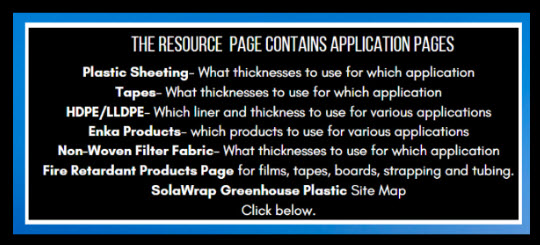Is GPS HDPE 20 compatible chemically if being overlapped by a liquid-applied polyurethane waterproofing application?
Question: Is GPS HDPE 20 chemically compatible if being overlapped by a liquid-applied polyurethane waterproofing application?
Answer: Yes, the HDPE is generally chemically compatible with liquid applied polyurethane waterproofing. The product engineers always recommend doing a test under your particular set of conditions to ensure that the products you are using are compatible given your usage requirements.
We supply the HDPE in many widths. In thicknesses up to 30 mil, we can fabricate and fold large panels. The standard roll widths are 23’ wide if one wishes to use full sized rolls. Any widths below 23’ are available, as we slit the film to the needed widths for our customers applications.
Click here for more information on GPS HDPE 20
When do you use HDPE versus LLDPE? 
Is GPS HDPE 20 appropriate for building foundation waterproofing
Question: Is HDPE 20 mil appropriate for building foundation waterproofing?
Answer: Yes, HDPE is appropriate for building foundation waterproofing. In addition to helping waterproof, it can also act to help protect the foundation from root intrusion. When also acting as a root barrier, many customers upgrade to 30 mil. Depending on the roots involved, we also have customers who use 40 and 60 mil for this application. In normal buried applications, the HDPE made from 100% virgin resin will last for hundreds if not thousands of years. The tight cellular structure of HDPE makes it an effective vapor retarder.
HDPE vs LDPE- Is there much of a difference?
Question: Is there much of a difference between HDPE and LDPE?
Answer: The answer is both yes and no. There is very little difference in the density of HDPE versus LDPE. HDPE is ever so slightly higher/ more dense. What separates it from LDPE is its internal structure that gives it a stronger intermolecular force and tensile strength. The difference in strength is greater than the difference in density, giving HDPE a higher specific strength.
HDPE is more rigid than LDPE in the same thickness, but until the HDPE gets thick it is not rigid. In a 1 mil, 3 mil, for instance it is quite flexible. Even in 6 or 10 mil, still quite flexible, though noticeably less flexible than LDPE as it gets thicker. LDPE has very limited chemical resistance compared to HDPE, and this is one of the biggest differentiators between which material is used in many applications.
Root Barrier to Stop Roots
Question: I have a larger maple tree, three feet in diameter and 70 feel tall. It's spreading its roots around, raising the sidewalk, and making it impossible to plant some flowers in my small, urban front area. The roots even grow deep enough to get into our sewer pipe, which we had to replace.
Every year, in order to plant a few flowers and pretty up the front area, I dig up the soil, and cut the mass of roots that grew over the last year. It's work that has given more more than one backache.
Is there some kind of commercial root barrier I can buy? Will such a root barrier work, or will the roots grow through and under it? Is there any other solution to reduce the amount of work I have tearing out roots each year?
Answer: A root barrier made from HDPE is a physical underground heavy duty plastic sheeting product that in essence creates a "wall" to stop the roots from entering the areas where it is creating a barricade. Roots will not penetrate this root barrier. The idea is for the root barrier to make it possible to protect sidewalks, sewer lines and the like from destruction from roots. Please click here to visit the Root Barrier page.
HDPE Liners- How are they used in Oil Fields?
Question: Hare are HDPE liners used in oil field applications?
Answer: An HDPE liner is usually a continuous liner whose primary purpose is to restrict the release of oilfield fluids, oil and gas, or waste constituents. Liners in this capacity must have a low enough permeability to contain the contaminants, be chemically compatible with the material it will be containng, be capable of maintaining its strength or integrity over time, and also be mechanically compatible with the operation. While there are a variety of geomembrane materials to consider for a job, HDPE is sued most of the time. The American Society for Testing and Materials (ASTM) has outlined the standards for geomembrane liners. The EPA has developed test methods as well.
HDPE- What is it anyway?
Question: What is HDPE, and what is it used for?
Answer: HDPE stands for High Density Polyethylene. Some have abbreviated it as PEHD or polyethylene high density. HDPE is as the name implies a polyethylene liner that is made from petroleum. It can be recycled and its number is "2".
HDPE- Why is is used in landfills?
Question: Why is HDPE used in landfills as a liner?
Answer: Landfills receive all sorts of environmentally un-friendly items that over time degrade and in some cases liquefy. Some of these liquids may be toxic. A landfill liner is one that acts as a low permeability barrier, keeping the toxic leachate out of the underlying aquifers or nearby rivers thus contaminating the water source. Most landfills today require a high density polyethylene geomembrane or liner to create that barrier.
HDPE as a root barrier
Question: Why is HDPE called out as a liner to stop roots from going where you don't want them to go?
Answer: HDPE is a very strong liner/membrane that stops even the most aggressive roots from making their way under sidewalks and other areas. HDPE is produced from specially formulated virgin polyethylene resin that gives it its strength.
Reserve Pit Liners Lined with HDPE Protect the Environment
Question: Why are reserve pit liners lined with HDPE an asset to the environment?
Answer: Plastic take such a beating today for polluting our environment. What people fail to take into account is the role certain types of plastic sheeting play to actually save the environment from contamination. Take HDPE liners for example. When crews are drilling for oil reserve pits (also called, earthen pits) are created next to the drilling rigs to capture the drilling muds and well cuttings in natural gas or oil fields. Reserve pit contents can contaminate soil, surface and groundwater with metals and hydrocarbons if not managed correctly. As the water and reserve pit fluids evaporate the remaining contaminants become concentrated and more easily manageable for disposal.








